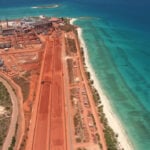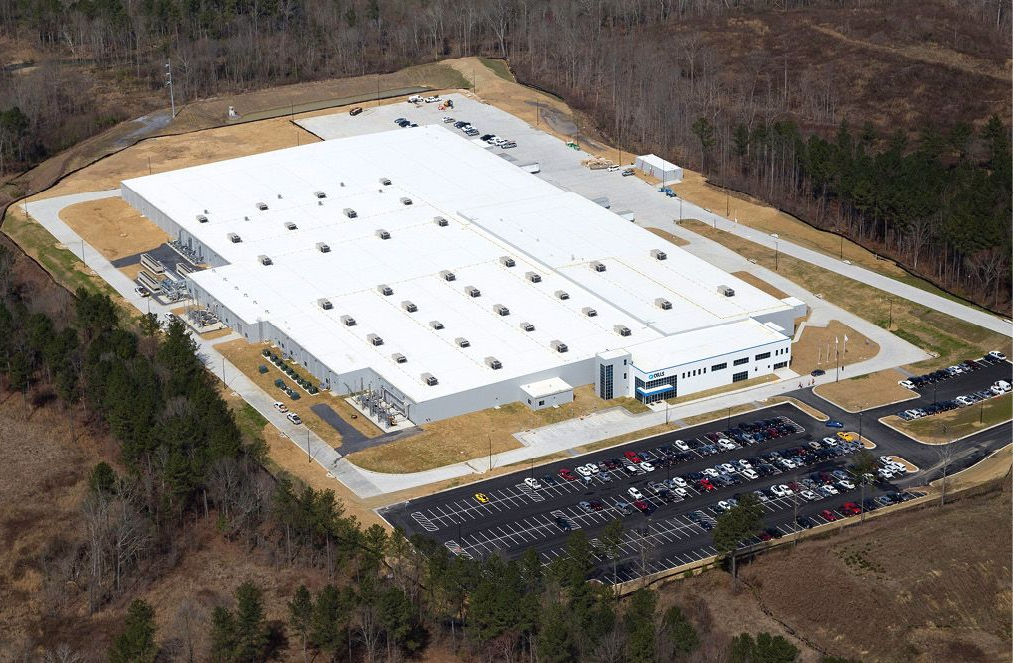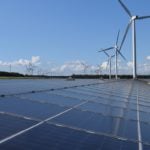Latest
News , Editors’ Blog , Features
The solar farms will help spearhead renewable energy developments in the region once Rio Tinto’s mining facility (above) closes at the end of the decade. Image: Rio Tinto.
British-Australian multinational mining company Rio Tinto is set to develop two 5.25MW solar farms in the Gove Peninsula of the Northern Territory, Australia.
The solar farms will be developed in Gumatj and Rirratjingu country, both Aboriginal communities, on Rio Tinto leases. This is following agreements with the Gumatj and Rirratjingu Traditional Owner Groups.
This article requires Premium Subscription Basic (FREE) Subscription
Unlock unlimited access for 12 whole months of distinctive global analysis
Photovoltaics International is now included.
Regular insight and analysis of the industry’s biggest developments
In-depth interviews with the industry’s leading figures
Unlimited digital access to the PV Tech Power journal catalogue
Unlimited digital access to the Photovoltaics International journal catalogue
Access to more than 1,000 technical papers
Discounts on Solar Media’s portfolio of events, in-person and virtual
Or continue reading this article for free
Crucially, the development of the solar farms will help produce green electricity and spur low-carbon growth for the Gove community once mining operations cease, with this expected towards the end of this decade.
Rio Tinto began mining operations in the Gove peninsula in 1971 and currently extracts bauxite. The organisation’s plant produces around 11.56Mt per year, and bauxite is the most common ore of aluminium. Rio Tinto’s plant supplies domestic manufacturers such as Queensland Alumina Limited and Yarwun refineries in Gladstone, Queensland.
Power generation equipment supplier Aggreko has agreed to construct, own and operate the solar farms for Rio Tinto for up to 10 years, beginning construction in July 2024 and with completion scheduled for early 2025.
According to Rio Tinto, the solar farms, once complete, are expected to reduce the region’s annual diesel consumption by about 20%, or 4.5 million litres a year.
Commenting on the development of the solar farms, Rio Tinto Gove operations acting general manager Shannon Price said that the projects will “leave a positive legacy for the Gove Peninsula communities after bauxite mining ceases”.
“We are working in partnership with the Northern Territory government and Traditional Owners to ensure a smooth transition of leased land and town assets and infrastructure as Rio Tinto prepares to stop mining at Gove later this decade,” Price said.
“We are committed to helping plan for the region’s future, which includes providing options for reliable, affordable and environmentally sustainable infrastructure.”
Rio Tinto leverages Aboriginal support for renewable energy assets
This is not the first time Rio Tinto has used Aboriginal communities’ support to develop solar assets in Australia.
In October 2023, the mining major signed a memorandum of understanding (MoU) with the Aboriginal energy partnership, Yindjibarndi Energy Corporation (YEC), to pursue the development of solar and wind projects in the Pilbara region of Western Australia.
The total capacity of the potential projects under the MoU was not clarified, though Rio Tinto said that around 600-700MW of renewables generation would be required to “displace the majority of gas use” from its four operational Pilbara gas power stations. It was also currently assessing the development of around 300MW of solar projects.
It added that the MoU will relate to some of the YEC’s Stage 1 projects for 750MW combined solar, wind and battery storage projects.
San Francisco Bay Area, USA
PV Tech has been running an annual PV CellTech Conference since 2016. PV CellTech USA, on 8-9 October 2024 is our second PV CellTech conference dedicated to the U.S. manufacturing sector. The event in 2023 was a sell out success and 2024 will once again gather the key stakeholders from PV manufacturing, equipment/materials, policy-making and strategy, capital equipment investment and all interested downstream channels and third-party entities. The goal is simple: to map out PV manufacturing in the U.S. out to 2030 and beyond.
Understanding PV module supply to the European market in 2025. PV ModuleTech Europe 2024 is a two-day conference that tackles these challenges directly, with an agenda that addresses all aspects of module supplier selection; product availability, technology offerings, traceability of supply-chain, factory auditing, module testing and reliability, and company bankability.
The conference will gather the key stakeholders from PV manufacturing, equipment/materials, policy-making and strategy, capital equipment investment and all interested downstream channels and third-party entities. The goal is simple: to map out PV manufacturing out to 2030 and beyond.
PV Tech has been running PV ModuleTech Conferences since 2017. PV ModuleTech USA, on 17-18 June 2025, will be our fourth PV ModulelTech conference dedicated to the U.S. utility scale solar sector. The event will gather the key stakeholders from solar developers, solar asset owners and investors, PV manufacturing, policy-making and and all interested downstream channels and third-party entities. The goal is simple: to map out the PV module supply channels to the U.S. out to 2026 and beyond.
Read Next
The NSW government has declared six renewable energy projects, one solar and three PHES sites, as “critical” for the Australian economy.
Innovations in wafer sophistication and advances in cell output voltage will be key developments in upstream solar, Martin Green told PV Tech.
In June 2024, rooftop solar PV installations in Australia dropped to their lowest point since January, with 247MW installed.
Genex Power has secured a five-year US$107 million senior debt facility for its 50MW Kidston and Jemalong solar projects in Australia.
Chinese module manufacturer Trina Solar has signed a collaboration agreement with IES-UPM to drive innovation in the solar industry.
New Green Power has announced an agreement to offer Google the rights to procure up to 300MW of solar power from its development pipeline.
Subscribe to Newsletter
Most Read
Features , Interviews , Long Reads
Upcoming Events
Sands Expo and Convention Centre, Singapore
San Francisco Bay Area, USA
https://www.pv-tech.org/rio-tinto-signs-aboriginal-agreements-for-two-solar-farms-in-australias-northern-territory/





